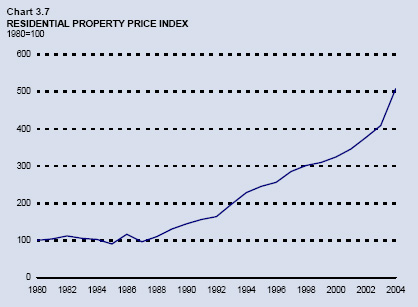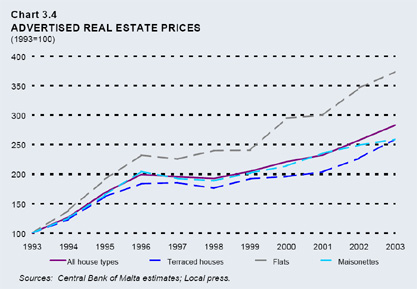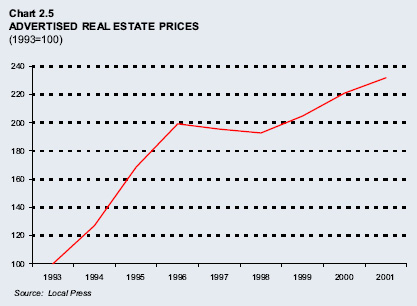Property Prices in Malta
These documents contain excerpts about property prices in Malta, mdina and valletta obtained from the Central Bank Annual Reports issued between 1998 and 2009. Excerpts taken from the Central Bank Annual Reports:
http://www.centralbankmalta.com/site/publications2.asp
To view a particular document click on one of the 'View Report' links below. You are also
able to download the respective documents by right-clicking on one of the 'Download Report' links and selecting 'Save Target As...'
View Report: [2009] [2008] [2007] [2006] [2005] [2004 - 2001] [2000 - 1998]
Download Report: [2009] [2008] [2007] [2006] [2005] [2004 - 2001] [2000 - 1998]
2004 Report
Developments in the property
market exert an impact on household wealth and
thus may influence aggregate demand, output and
inflation. Given the importance of price indices
related to this sector, the Central Bank of
Malta upgraded the index it uses to measure
price changes in residential property. The new
index, which goes back to 1980, captures all
advertised properties in Malta and Gozo except
those for commercial purposes.

According to the new index,
advertised property prices continued to
accelerate in 2004, rising by an estimated 24.2%
on average. Thus, the general upward trend in
residential property prices, in evidence since
1989, persisted (see Chart 3.7). The increase in
average prices was, to an extent, inflated by
developments in u p-market units, as growth
based on median prices was somewhat slower.9
Prices of all property types rose during 2004,
with the sharpest growth registered in the
asking prices of town houses and finished flats.
These increases took place against a background
of low interest rates and may have reflected a
shift in preferences for investment in real
estate as opposed to financial assets, on
account of attractive mortgage financing
opportunities.
2003 Report
Real estate prices, together
with the prices of other assets held by
households, affect private consumption through
the wealth effect and may be indicators of
future developments in output and demand.
Furthermore, higher house prices often
contribute to rapid growth in household debt,
with implications for the stability of the
financial sector. For these reasons, and also
because developments in real estate prices are
of interest per se, the Bank monitors house
price movements on a quarterly basis through an
index of asking prices, stratified by type and
locality.

Chart 3.4 illustrates trends
in the average asking price of dwellings
(including finished terrace houses and flats and
maisonettes in shell form) over the eleven years
to 2003. This measure suggests that house prices
doubled between 1993 and 1996, after which a
short period of relative stability ensued. The
upward trend resumed in 1999 although at a more
moderate pace than in the early nineties. The
rise in house prices in 2003 is estimated at
around 10%, roughly the same as that recorded in
2002. Prices of all property types rose during
the year under review, with flats and terraced
houses showing the sharpest increases.
House price inflation in
2003, which was more rapid than consumer price
inflation, may have been fuelled by the relative
unattractiveness of financial assets,as interest
rates continued to fall and the capital market
remained weak. This, combined with the inflow of
funds from abroad under the Investment
Registration Scheme, may have induced investors
to purchase real estate for investment purposes
instead.
2002 Report
Real estate prices, as well
as the prices of other assets held by
households, affect private consumption through
the wealth effect. They are also of interest per
se, because they refer to a large and important
market. The Central Bank monitors house price
movements through an index of asking prices,
stratified by type and locality. Chart 2.6
illustrates trends in the average asking price
of dwellings (including finished terraced houses
and flats and maisonettes in shell form) over
the ten years to 2002.
As can be seen in the Chart,
this measure indicates an acceleration of
property price inflation in 2002, although this
was not as pronounced as the one observed in the
mid-nineties. There is some evidence to suggest
that this development may have been due to the
inflow of funds from abroad in connection with
the Investment Registration Scheme5 combined
with the weak performance of the capital market.
In this case, property price inflation can be
expected to moderate in the future.
2001 Report
Since movements in property
prices may lead to an increase in underlying
inflationary pressures, the Central Bank
monitors trends through an index of asking
prices for property, stratified by type and
locality. This approach, however, has a number
of shortcomings. Asking prices are usually
higher than contracted prices, and properties
placed on the market at different points in time
may not be strictly comparable.
Chart 2.5 illustrates
movements in average asking prices of real
estate (including finished terraced houses and
flats, and maisonettes in shell-form) as
advertised in the local press over the last nine
years. The Chart suggests that house prices
doubled between 1993 and 1996. This was followed
by a short period of relative stability, as the
property boom came to an end. But the upward
trend resumed in 1999, though the rise of these
last years was more moderate than the
double-digit growth of the early nineties. In
fact, the rise in real estate prices during
2001, estimated at under 5%, was only slightly
more rapid than that in the RPI. The increase
was also slower than that recorded in 1999 and
2000, and was mainly concentrated in the central
region.

In recent years the demand
for residential property has shifted away from
terraced houses towards flats and maisonettes.
This probably reflects demographic and social
trends which are giving rise to smaller family
units. Since the supply of flats and maisonettes
is much larger than that of terraced houses,
this shift in preferences may be one of the
factors behind the recent slowdown in property
price inflation.
|

